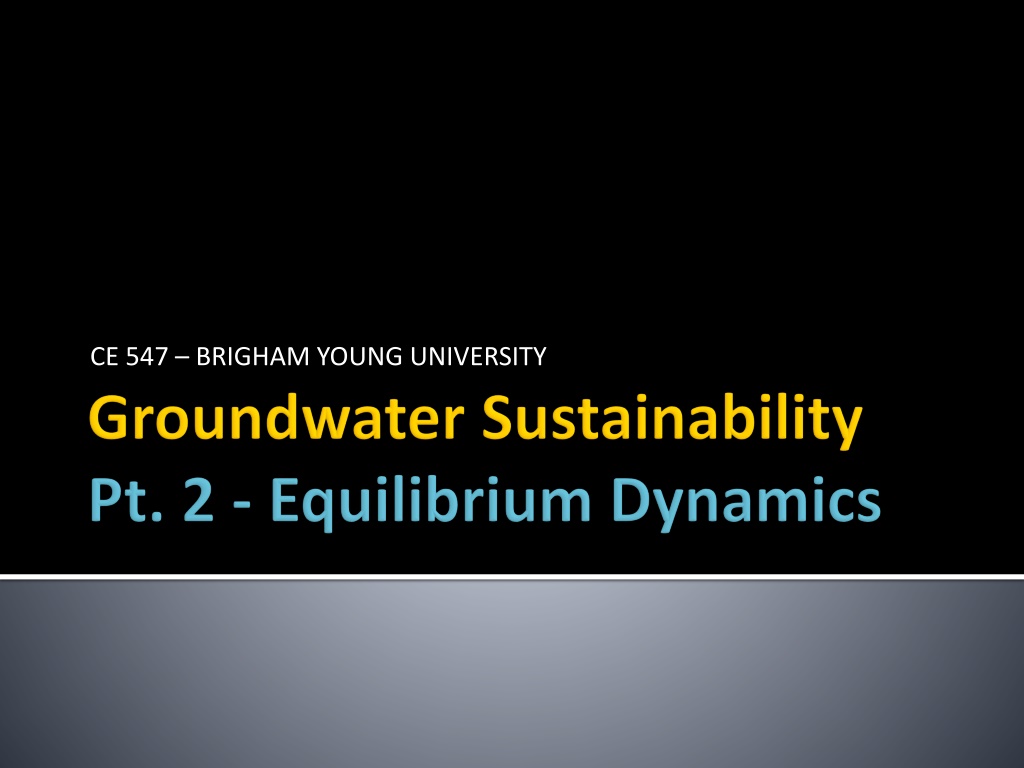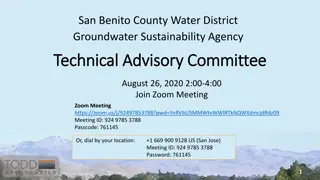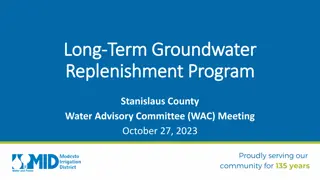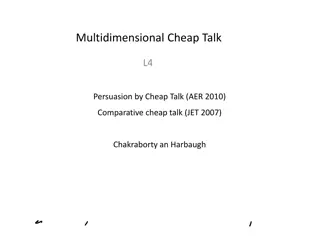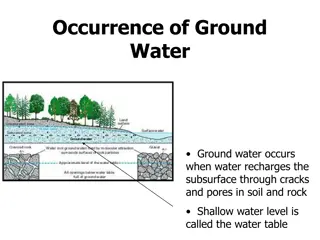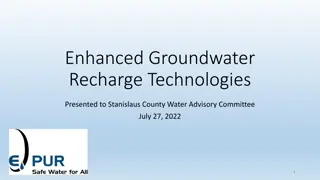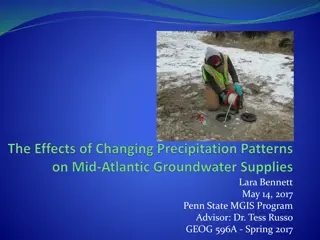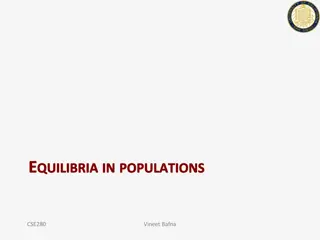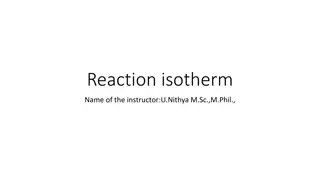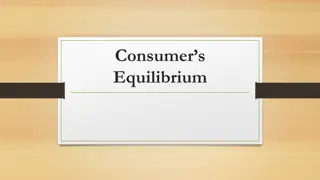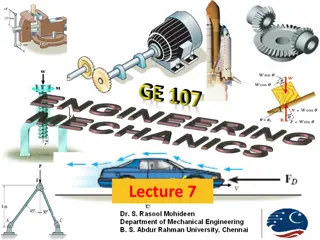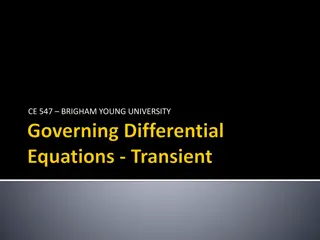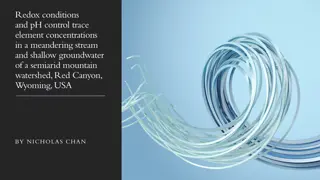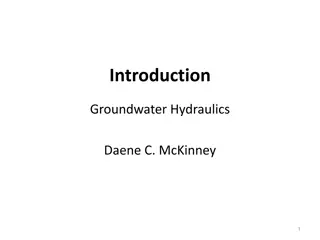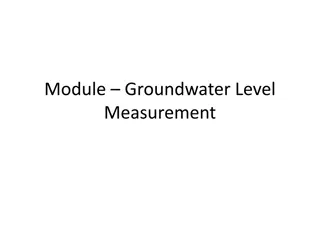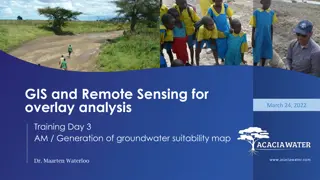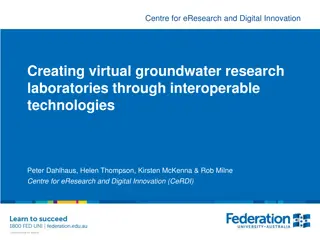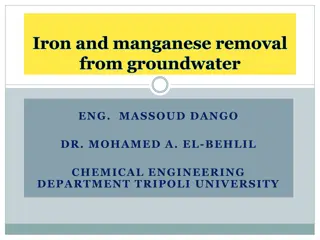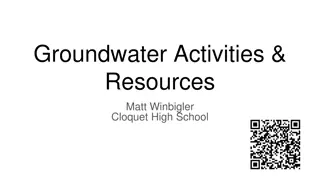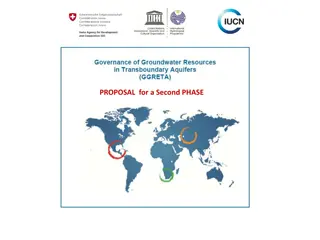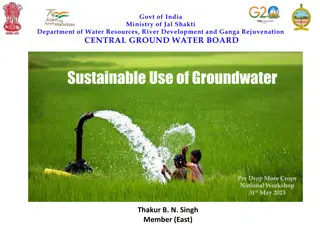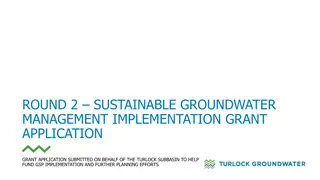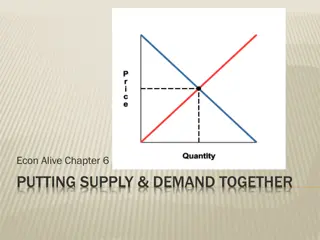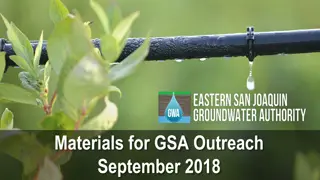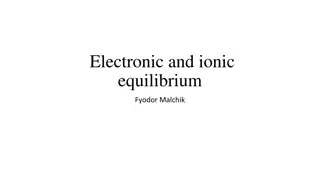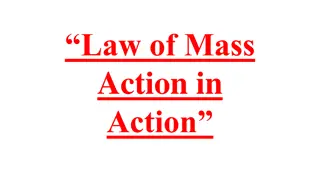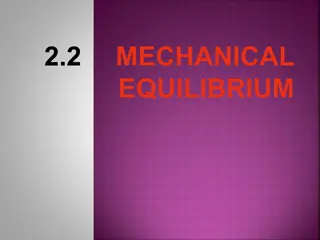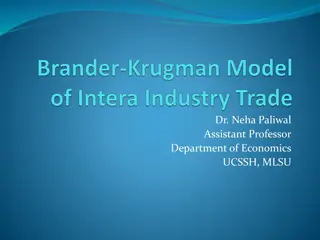Understanding Groundwater Sustainability and Equilibrium Dynamics
This content delves into the concepts of groundwater sustainability, equilibrium, and capture in relation to groundwater management. It explores transitional storage, groundwater mining, and debunks the water budget myth. The images and explanations illustrate how pumping affects aquifers, the evolution of equilibrium states, and the implications of capture on water tables. By examining the balance of recharge, discharge, and storage, the content highlights the importance of achieving equilibrium to prevent groundwater mining.
Download Presentation

Please find below an Image/Link to download the presentation.
The content on the website is provided AS IS for your information and personal use only. It may not be sold, licensed, or shared on other websites without obtaining consent from the author. Download presentation by click this link. If you encounter any issues during the download, it is possible that the publisher has removed the file from their server.
E N D
Presentation Transcript
Understand how equilibrium and capture relate to groundwater sustainability Be able to define: Transitional storage Groundwater mining Be able to define the water budget myth and the impacts it has on groundwater management policy
Precip/ Recharge 3
Under natural conditions ... previous to development by wells, aquifers are in a state of approximate dynamic equilibrium. Discharge by wells is thus a new discharge superimposed upon a previously stable system, and it must be balanced by an increase in the recharge of the aquifer, or by a decrease in the old natural discharge, or by loss of storage in the aquifer, or by a combination of these. -- Theis (USGS) 1940 Pumpage = Increased recharge + Water removed from storage + Decreased discharge. 5
As pumping begins: Pumpage = Increased recharge + Water removed from storage + Decreased discharge. After equilibrium is achieved Pumpage = Increased recharge + Decreased discharge. Transitional storage = water lost from storage as a system evolves from one equilibrium state to another 6
Equilibrium Transition If equilibrium is never achieved, an aquifer is said to be in a state of groundwater mining New Equilibrium 7
Before pumping: R (recharge from streams) = D (discharge to phreatophytes) Shortly after pumping: Pumping = Decreased D + Water from storage Eventually: Pumping = Decreased (eliminated) D Capture is assumed to happen water table is greater than 5 ft below phreatophytes. 1000-yr simulation. Pumping = R = D. 8
Discharge to Phreatophytes Discharge to phreatophytes vs. time after pumping begins. Case 1: >1000 yrs to full capture Case 2: ~500 yrs to full capture 9
The pumps should be placed as close as economically possible to areas of rejected recharge or natural discharge where ground water is being lost by evaporation or transpiration by non-productive vegetation.. In localities developing water from non-artesian aquifers and remote from areas of rejected recharge or natural discharge, the condition of equilibrium connoted by the concept of perennial safe yield may never be reached in the predictable future and the water used may all be taken from storage. Theis, Charles V. "The source of water derived from wells." Civil Engineering 10.5 (1940): 277-280. 10
Perhaps the most common misconception in groundwater hydrology is that a water budget of an area determines the magnitude of possible groundwater development. The ultimate production of groundwater depends on how much the rate of recharge and (or) discharge can be changed how much water can be captured. Although knowledge of the virgin rates of recharge and discharge is interesting, such knowledge is almost irrelevant in determining the sustained yield of a particular groundwater reservoir. Somehow, we have lost or misplaced the ideas Theis stated in 1940 and before. Bredehoeft, J. D., Papadopulos, S. S., & Cooper, H. H. (1982). Groundwater: The water budget myth. Scientific basis of water resource management, 51, 57. 11
